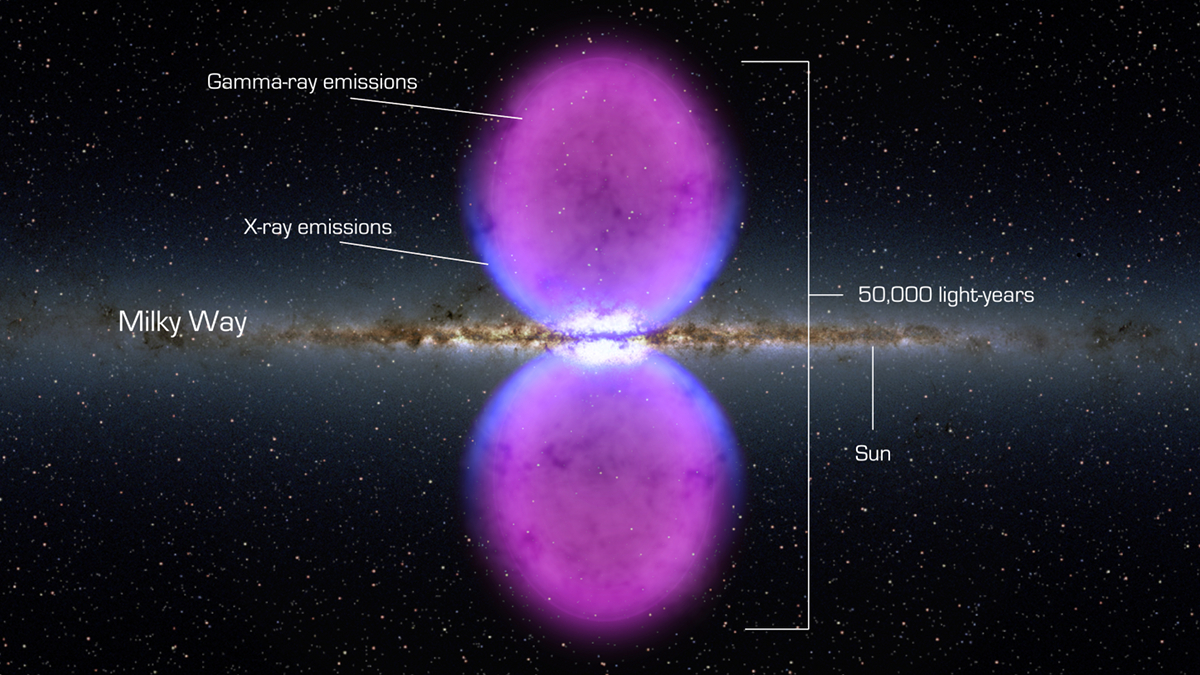
 Credit: NASA's Goddard Space Flight Center
Credit: NASA's Goddard Space Flight Center
Temporarily Blowing Bubbles?
Just when you think you know everything about a galaxy, something new turns up. Or something old, newly discovered. The Fermi Gamma-Ray Space Telescope, which has been scanning the entire sky every three hours for the past two and a quarter years since its launch, provides the best view of gamma-ray emission from space of any gamma-ray observatory yet launched. A new careful analysis of the data obtained by Fermi's Large Area Telescope has revealed a startling thing: two fairly symmetric bubbles of gamma ray emission around the center of our own galaxy, the Milky Way. Scientists are puzzled by these enormous structures, pictured in the artist rendition above. What created them? Two possibilities suggest themselves. These bubbles could have been produced by a sudden burst of star formation (and star death) near the center of the Milky Way. Or, perhaps the bubbles were produced by the awakening of the Milky Way's sleeping giant, the supermassive black hole known as Sgr A*. Scientist surmise that perhaps Sgr A* emitted an enormously powerful particle beam jet sometime in the dim and distant past. Whatever caused these bubbles has long since passed away, leaving behind this ghostly glow of gamma-rays as the last vestige of this powerful outburst.
Published: November 22, 2010
<
HEA Dictionary ● Archive
● Search HEAPOW
● Other Languages
● HEAPOW on Facebook
● Download all Images
● Education ● HEAD
>

Each week the HEASARC
brings you new, exciting and beautiful images from X-ray and Gamma ray
astronomy. Check back each week and be sure to check out the HEAPOW archive!
Page Author: Dr. Michael F. Corcoran
Last modified Tuesday, 27-Feb-2024 10:06:40 EST


